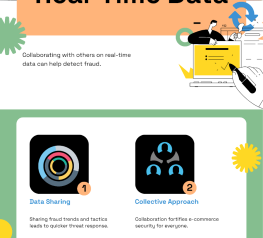Effective E-Commerce Marketing Strategies Unveiled
Introduction to E-Commerce Marketing Strategies
In the competitive world of online business, employing effective E-Commerce Marketing Strategies is essential for success. From enhancing visibility to engaging customers, the right strategies can significantly impact your bottom line. This article explores five proven e-commerce marketing strategies that can help you boost sales and grow your online business.

Utilizing Social Media for E-Commerce Success
Social media platforms are invaluable tools for e-commerce businesses. They provide opportunities to reach a broad audience, engage with customers, and drive traffic to your website. To leverage social media effectively:
Choose the Right Platforms: Focus on platforms where your target audience is most active. For example, Instagram and Pinterest are great for visual products, while LinkedIn is ideal for B2B services.
- Create Engaging Content: Share a mix of promotional content, user-generated content, and behind-the-scenes looks to keep your audience engaged.
- Utilize Influencers: Partnering with influencers can help amplify your reach and credibility.
- Interactive Campaigns: Implement interactive campaigns such as contests, polls, and live videos to engage users and create buzz around your brand.
- Social Commerce: Utilize social commerce features such as shoppable posts and in-app checkout to streamline the purchasing process and drive sales directly from social media platforms.
For more detailed guidelines on social media marketing for e-commerce, visit Digital.gov.

SEO: The Backbone of E-Commerce Marketing
Search engine optimization (SEO) is crucial for driving organic traffic to your e-commerce site. By optimizing your website for search engines, you can improve your rankings and attract more potential customers. Key SEO strategies include:
- Keyword Research: Identify and use relevant keywords that your target audience is searching for.
- On-Page Optimization: Optimize meta tags, headers, and content with targeted keywords.
- Technical SEO: Ensure your website is mobile-friendly, has fast loading times, and uses secure HTTPS connections.
- Link Building: Obtain high-quality backlinks from reputable websites to boost your site’s authority.
- User Experience: Improve user experience by creating a clean, easy-to-navigate site structure and offering clear calls to action.
- Content Optimization: Regularly update and optimize your content to keep it relevant and valuable to your audience.
For authoritative resources on SEO best practices, check out Search Engine Land
Content Marketing: Engaging and Educating Your Audience
Content marketing involves creating valuable, relevant content to attract and engage your target audience. Effective content marketing strategies for e-commerce include:

Blogging: Regularly publish informative blog posts that address your customers’ pain points and interests.
- Product Guides and Reviews: Create detailed product guides and reviews to help customers make informed decisions.
- Video Content: Use videos to showcase products, provide tutorials, and share customer testimonials.
- User-Generated Content: Encourage customers to create and share content about your products, such as reviews, photos, and videos.
- Educational Content: Develop educational content such as how-to guides, webinars, and e-books to establish your brand as an authority in your niche.
- Storytelling: Use storytelling to connect with your audience on an emotional level and build brand loyalty.
By consistently providing high-quality content, you can build trust with your audience and encourage repeat business.
Email Marketing: Building Relationships and Driving Sales
Email marketing remains one of the most effective ways to communicate with your customers. It allows you to build relationships, promote products, and drive sales directly to your inbox. Key email marketing strategies include:

Personalization: Tailor your emails based on customer behavior and preferences.
- Segmentation: Divide your email list into segments to send more targeted messages.
- Automation: Use automated email campaigns to nurture leads and encourage repeat purchases.
- Engaging Content: Create engaging email content, including promotional offers, newsletters, and personalized recommendations.
- A/B Testing: Perform A/B testing to optimize your email campaigns and improve open and click-through rates.
- Responsive Design: Ensure your emails are mobile-friendly and look great on any device.
Paid Advertising: Maximizing Reach and Conversions

Paid advertising can help you reach a larger audience quickly and drive immediate traffic to your e-commerce site. Effective paid advertising strategies include:
- Pay-Per-Click (PPC) Advertising: Use platforms like Google Ads to target specific keywords and drive traffic to your site.
- Social Media Ads: Utilize Facebook, Instagram, and other social media ads to reach your target audience.
- Retargeting Campaigns: Use retargeting to reach users who have previously visited your site but did not make a purchase.
- Display Ads: Create visually appealing display ads to capture the attention of potential customers.
- Shopping Ads: Use Google Shopping Ads to showcase your products directly in search results.
- Influencer Partnerships: Collaborate with influencers to promote your products through sponsored posts and affiliate marketing.
By investing in paid advertising, you can increase your brand’s visibility and drive more conversions.
Conclusion: Integrating B2C Marketing Strategies for Optimal Growth
Integrating these e-commerce marketing strategies can help you achieve sustainable growth and success in the competitive online marketplace. By leveraging social media, SEO, content marketing, email marketing, and paid advertising, you can create a comprehensive marketing plan that drives traffic, engages customers, and boosts sales. For further insights and resources, visit credible sources like Digital.gov.
Expanding on Each E-Commerce Marketing Strategy
To further delve into these strategies, let’s explore additional tips and tactics that can enhance your e-commerce marketing efforts:
Social Media Marketing Tips:
- User Engagement: Respond to comments and messages promptly to build a community around your brand.
- Analytics: Use social media analytics tools to track your performance and adjust your strategies accordingly.
- Hashtags: Utilize relevant hashtags to increase the visibility of your posts and reach a wider audience.
- Collaborations: Partner with complementary brands for joint campaigns and giveaways.
Advanced SEO Techniques:
- Schema Markup: Implement schema markup to enhance your search engine listings with rich snippets.
- Local SEO: Optimize for local search by creating location-specific pages and getting listed in local directories.
- Voice Search Optimization: Optimize your content for voice search by focusing on natural language and long-tail keywords.
- Content Clusters: Organize your content into clusters around key topics to improve internal linking and topical relevance.
Content Marketing Innovations:
- Interactive Content: Create interactive content such as quizzes, polls, and calculators to engage users.
- Podcasting: Start a podcast to reach a new audience and establish your brand as an industry thought leader.
- Guest Blogging: Contribute guest posts to authoritative blogs in your niche to build backlinks and expand your reach.
- Visual Content: Invest in high-quality images, infographics, and videos to make your content more appealing and shareable.
Email Marketing Best Practices:
- Welcome Series: Implement a welcome email series to introduce new subscribers to your brand and products.
- Abandoned Cart Emails: Send automated reminders to customers who have left items in their cart without completing the purchase.
- Re-engagement Campaigns: Reach out to inactive subscribers with special offers and incentives to win them back.
- Customer Feedback: Use email surveys to gather feedback and improve your products and services.
Paid Advertising Enhancements:
- Audience Targeting: Use advanced targeting options to reach specific demographics, interests, and behaviors.
- Budget Optimization: Allocate your budget based on the performance of different campaigns and adjust as needed.
- Ad Testing: Continuously test different ad creatives, headlines, and formats to identify what works best.
- Landing Pages: Create dedicated landing pages for your ads to improve conversion rates and track results more accurately.
Measuring Success and Continuous Improvement
Implementing these strategies is just the beginning. To ensure long-term success, it’s crucial to measure your results and continuously improve your efforts. Here are some key metrics to track:
- Traffic: Monitor your website traffic to see how your marketing efforts are driving visitors to your site.
- Engagement: Track user engagement on your social media posts, emails, and content to gauge interest and interaction.
- Conversions: Measure the conversion rate of your marketing campaigns to understand their effectiveness in driving sales.
- ROI: Calculate the return on investment for each marketing channel to determine where to allocate your budget.
By regularly analyzing these metrics, you can identify areas for improvement and make data-driven decisions to optimize your e-commerce marketing strategies.
Advanced Strategies for Maximizing E-Commerce Success
Leveraging Data and Analytics
To truly excel in e-commerce marketing, leveraging data and analytics is crucial. These tools allow you to gain insights into customer behavior, identify trends, and make informed decisions. Here are some advanced strategies to consider:
- Customer Segmentation: Use data to segment your customers based on various criteria such as demographics, purchase history, and behavior. This allows you to tailor your marketing efforts to different customer groups effectively.
- Predictive Analytics: Implement predictive analytics to forecast future trends and customer behavior. This can help you anticipate demand, optimize inventory, and improve marketing strategies.
- A/B Testing: Continuously run A/B tests on your website and marketing campaigns to determine what works best. Test different headlines, images, CTAs, and layouts to optimize conversions.
- Customer Lifetime Value (CLV): Focus on increasing CLV by identifying high-value customers and nurturing them through personalized marketing strategies. Use data to predict which customers are likely to be most profitable over time.
- Data Visualization: Utilize data visualization tools to create intuitive dashboards that provide real-time insights into your marketing performance. This helps in making quick, data-driven decisions.
Enhancing Customer Experience (CX)
An exceptional customer experience can differentiate your brand from competitors and foster loyalty. Here are some strategies to enhance CX:
- Personalization: Use customer data to personalize the shopping experience. Recommend products based on past purchases, personalize email content and tailor website experiences to individual users.
- Omnichannel Integration: Ensure a seamless shopping experience across all channels, including online, mobile, and in-store. This consistency can significantly improve customer satisfaction.
- Customer Support: Provide excellent customer support through various channels such as live chat, email, and social media. Implement chatbots to handle common queries quickly and efficiently.
- User-Friendly Website: Optimize your website for ease of use. Ensure fast loading times, intuitive navigation, and mobile responsiveness to improve the overall shopping experience.
- Customer Feedback: Regularly gather and act on customer feedback to improve your products and services. Use surveys, reviews, and direct feedback to identify areas for improvement.
Utilizing Emerging Technologies
Staying ahead in the e-commerce landscape often involves adopting new technologies. Here are some cutting-edge technologies to consider:
- Artificial Intelligence (AI): Implement AI to automate tasks, personalize marketing efforts, and enhance customer service. AI can help with product recommendations, dynamic pricing, and fraud detection.
- Augmented Reality (AR): Use AR to create immersive shopping experiences. Allow customers to virtually try on products, visualize furniture in their homes, or see how makeup looks on their faces.
- Voice Commerce: Optimize your e-commerce site for voice search and commerce. As smart speakers become more popular, voice commerce is an emerging trend worth exploring.
- Blockchain: Leverage blockchain technology for secure transactions, transparent supply chains, and authenticity verification of products.
- Internet of Things (IoT): Use IoT devices to streamline operations and enhance the customer experience. For example, smart shelves can help manage inventory in real-time.
Expanding Internationally
Expanding your e-commerce business internationally can open up new markets and growth opportunities. Here are some strategies to consider:
- Market Research: Conduct thorough market research to understand the demand, competition, and cultural nuances of the target market.
- Localized Marketing: Tailor your marketing efforts to the local audience by translating content, adapting to local preferences, and using region-specific advertising channels.
- International Shipping: Offer reliable and cost-effective international shipping options. Partner with global logistics providers to ensure timely delivery.
- Payment Methods: Provide a variety of payment options that are popular in the target market, such as local credit cards, digital wallets, and alternative payment methods.
- Compliance: Ensure compliance with local laws and regulations, including taxes, data privacy, and consumer protection laws.
Building a Strong Brand
A strong brand can set you apart from the competition and create a loyal customer base. Here are some strategies to build and strengthen your brand:
- Brand Identity: Develop a clear and consistent brand identity, including your logo, colors, typography, and voice. Ensure that all marketing materials reflect this identity.
- Storytelling: Use storytelling to connect with your audience emotionally. Share your brand’s story, values, and mission to create a deeper connection with customers.
- Community Building: Build a community around your brand by engaging with customers on social media, creating a blog, and hosting events. Encourage user-generated content to foster a sense of belonging.
- Influencer Marketing: Partner with influencers who align with your brand values and have a strong following in your target market. Influencers can help amplify your message and reach new audiences.
- Consistency: Maintain consistency in your branding across all channels and touchpoints. This helps build trust and recognition among your audience.
Sustainable Practices
Adopting sustainable practices can attract eco-conscious consumers and differentiate your brand. Here are some strategies to consider:
- Sustainable Sourcing: Source products from suppliers who adhere to sustainable practices. Use eco-friendly materials and ensure fair labor practices.
- Eco-Friendly Packaging: Use recyclable, biodegradable, or reusable packaging materials. Reduce packaging waste by opting for minimalistic designs.
- Carbon Footprint: Take steps to reduce your carbon footprint by optimizing logistics, using renewable energy, and implementing energy-efficient practices.
- Transparency: Be transparent about your sustainability efforts. Share your initiatives and progress with customers to build trust and loyalty.
- Product Lifecycle: Consider the entire lifecycle of your products, from production to disposal. Design products that are durable, repairable, and recyclable.
Conclusion
Incorporating these advanced strategies into your e-commerce marketing plan can help you stay ahead of the competition, enhance customer satisfaction, and drive sustainable growth. By leveraging data and analytics, enhancing customer experience, adopting emerging technologies, expanding internationally, building a strong brand, and implementing sustainable practices, you can create a robust and future-proof e-commerce business.
Remember to continuously monitor your performance, gather feedback, and adapt your strategies to meet evolving market demands. With the right approach, you can achieve long-term success and establish your brand as a leader in the e-commerce industry.







